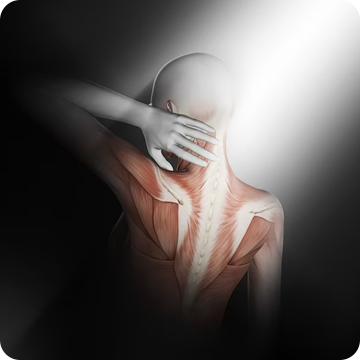
- admin
- February 17, 2025
The Impact of Trauma on the Nervous System: Understanding and Healing
Trauma, whether caused by an unexpected accident, loss, or prolonged stress, affects each of us in unique ways. It dramatically affects the body, particularly the neurological system, which is critical in our response to and recovery from emotional and physical wounds. Understanding how trauma affects the neurological system and how to treat it might help one become resilient and recover.
Trauma Affects the Nervous System:
Two primary components comprise our nervous system: the autonomic nervous system (ANS), which controls involuntary actions such as heart rate, digestion, and breathing, and the central nervous system (CNS), which comprises the brain and spinal cord. Two main branches of the autonomic nervous system—the sympathetic nervous system (SNS) and the parasympathetic nervous system (PNS)—are triggered when trauma strikes.
Whether physical, psychological, or emotional, trauma causes the body to respond naturally. The SNS drives this reaction; it is in charge of the well-known “fight-or-flight” reaction. When the body senses danger, it prepares to fight or run away, pumping adrenaline through the system. The body prepares for action; the heart rate rises, and muscles stiffen. Essential for survival, this reaction can save lives in threatening circumstances.
Trauma repeated or protracted, nevertheless, might cause this response to become dysregulated. The nervous system can become “stuck” in a raised state of alertness rather than reverting to a calm condition following the danger. This is where sometimes disregarded but equally crucial, the idea of the “freeze” response comes in. A survival mechanism, the freeze reaction, is the body’s “shuts down” response to great stress. Common symptoms in those coping with trauma are numbness, dissociation, and detachment from reality resulting from this state.
The neurological system might overwhelm itself if it is constantly under shock or stress. Constant activation of the fight-flight-freeze reactions could cause long-term problems like anxiety, depression, sleep disturbance, and chronic pain. Healing trauma thus calls for addressing the neural system directly, not only for talking about it.
The Function of the Freezing Response in Fight-Flight
Designed to keep us safe, the fight-flight-freeze reaction is a survival tool. When people confronted urgent physical hazards like predators or hostile tribes in ancient times, the body’s quick reaction let them either fight back or run for safety. More recently, though, the reaction can be brought on by psychological or emotional pressures, including interpersonal problems or traumatic events, including abuse.
Although the fight-or-flight reaction is vital at the moment, it is intended to be transient. The body is meant to return to a balanced condition once the risk has passed. For many others who have gone through trauma, though, this mechanism becomes thrown off. Though there is no immediate threat, the body remains continuously “high alert.” Along with a range of physical and psychological symptoms, including chronic stress, high blood pressure, digestive problems, and reduced capacity to handle daily tasks, this dysregulation can cause
Healing trauma, therefore, is about restoring balance to the neurological system, not only about mental wellness. Teaching the body and brain that they are no longer in danger can help the nervous system move from continual stress to serenity and relaxation. Here is where trauma-informed healing approaches can be quite helpful.
Techniques for Recovery: Healing the Nervous System
Fortunately, several treatment modalities enable individuals to restore their neurological systems following trauma. Both somatic experience and polyvagal theory exercises—which both center on the body’s reaction to trauma and stress—are among the most powerful tools available.
Somatic Experience
Designed by Dr. Peter Levine, somatic experience is a body-oriented method of trauma rehabilitation. Often disregarded in conventional talk therapy, this approach helps people become conscious of the sensations in their bodies. Trauma is stored in the body, according to Levine, and people can start to release the trapped energy from traumatic events by tuning in to physiological sensations—such as tension, heat, or discomfort.
Through somatic experience, individuals are encouraged to identify where they feel stuck; with the assistance of a qualified therapist, they can gently traverse these sensations to relieve tension and provide equilibrium. This mechanism lets the neural system “complete” the fight-flight-freeze reaction that might have been disrupted during the trauma, enabling the body to restore balance.
Exercises Using Polyvagal Theory
Developed by Dr. Stephen Porges, the polyvagal theory emphasizes the function of the vagus nerve in nervous system control. Crucially important in the parasympathetic nervous system, the vagus nerve helps the body to relax following stress. Polyvagal theory holds that activation of the vagus nerve can help the body move from the fight-or-flight reaction into a more relaxed, grounded state.
Practices include deep breathing, humming, and light movement abound in polyvagal theory exercises. These exercises help stimulate the vagus nerve, inducing the body’s relaxation reaction and assisting in moving away from states of great alert. These techniques can help the parasympathetic nervous system get stronger over time, facilitating stress and anxiety management for each person.
Final Thoughts
Though trauma has a significant effect on the nervous system, it is not something that defines us permanently. Understanding how trauma shapes our body and mind will help us to move actively toward recovery. For people trying to find calm and balance following trauma, techniques including somatic experience and polyvagal theory exercises give hope. Healing is not a quick process; with the correct tools and support, we can reconnect with our bodies, quiet the nervous system, and advance with a fresh sense of well-being.
If you or someone you love suffers from trauma, think about including these techniques in your path of healing. Healing is within grasp with time and effort.
